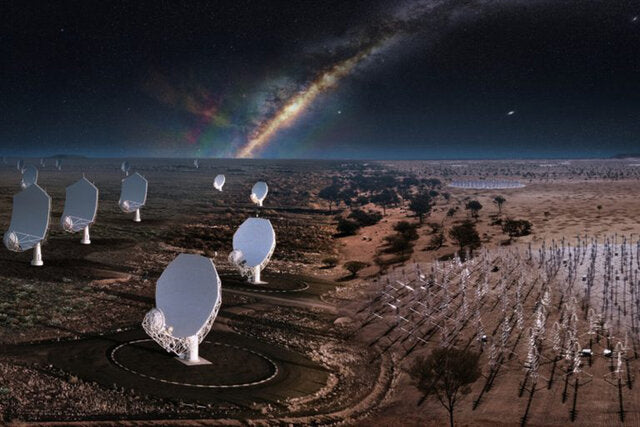
World's Largest Telescope Begin's Aussie Build 30 Years in the Making
Share
SKAO, the world's largest radio telescope, has finally broken ground today at two sites in Africa and Australia.
After 30 years of preparations and a year and a half of pre-construction work, which included selecting the right companies for the project, construction has begun on the SKA-Mid array in South Africa and the SKA-Low array in Western Australia north of Perth.
"The SKA project has been many years in the making," Catherine Cesarsky, the chair of the SKAO council, who attended a ground-breaking ceremony at the South African site, said in a statement. "Today, we gather here to mark another important chapter in this 30-year journey that we’ve been on together. A journey to deliver the world’s largest scientific instrument. After 18 months of intense activities around the world, we are starting construction of the SKA telescopes."

The Square Kilometer Array Observatory will be completed by the end of this decade. (Image credit: SKAO)
197 dishes, each 15 metres in diameter, will be used in the SKA-Mid array in Karoo to scan the sky for sources of radio waves between 350 MHz and 15.4 GHz. The SKA-Low array in Australia will rely on 131,072 dipole antennas to detect radio waves of frequencies between 50 to 350 MHz.
Astronomers can peer into regions of space that are obscured by other types of observatories using radio waves, which have a much longer wavelength than visible light.
The vast size of SKAO allows it to be extremely sensitive, allowing astronomers to detect signals from objects at the farthest reaches of the universe, whose light has traveled for so long that we can see how they looked shortly after the Big Bang.
"The SKA telescopes will truly revolutionize our understanding of the universe," Cesarsky said in the statement. "They will allow us to study its evolution and some of its most mysterious phenomena in unprecedented detail, and that's really exciting for the scientific community."

A composite render depicting SKA-mid in South Africa (left) and SKA-low in Australia (right).
As their name implies, the telescopes will have a total collecting area of one square kilometre by the end of the decade, but astronomers hope to start using some of the antennas as soon as the construction is completed. The first four SKA-Mid dishes and six SKA-Low stations will be able to work together as a single telescope, SKAO team said in the statement.
The first two antenna stations are due to be completed by May 2023, while the first dish is set to be installed in April 2024, followed by the completion of an additional three to four dishes each month, according to the SKAO statement.
Power and fiber infrastructure will be required to connect and support the antennas, which will be arranged in spirals that will have a diameter of almost 3,000 kilometres. Since June 2021, when the SKAO council finally approved the construction, the organization has selected key companies to complete this part of the installation.
SKAO representatives in an earlier interview that their aim is to build "the world's most sustainable research facility" that will receive the majority of its energy requirements from renewable resources.
Since the antennas are extremely sensitive, they must be installed in remote areas where conventional radio receivers cannot be used to avoid signal interference. The land near both arrays is inhabited by indigenous communities, who attended Monday's ground-breaking ceremonies. In addition to contracting local companies for a portion of the required work, SKAO previously committed to creating job opportunities for these communities.
"This event marks a wonderful milestone for the SKA Observatory and the world’s science community," 2KA-Low site construction director, Ant Schinckel, said in the statement. "We are about to begin building the world's largest radio telescopes, and here in Australia, we are doing it with the support and close cooperation of some of the oldest astronomers in the world, the Wajarri people. I am excited to start constructing the SKA-Low telescope on this ancient land, so ideally suited for radio astronomy.”
SKAO awarded over 40 contracts worth more than US$157 million over the past 18 months, with an additional $315 million worth of agreements being announced during the ceremonies on Monday.
SKAO's 16 member states jointly fund the $1.55 billion construction of the telescope and the $0.83 billion required for the first decade of its operations.
The telescope will serve astronomers for at least 50 years.
You’ve come this far…
Why not venture a little further into A.S.S. - their exclusive Australian Space Society.
And keep thrusting Australia into the deep unknown…
#Space_Aus




